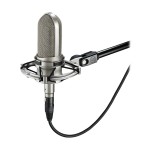Language
Ribbon Mics: How They Work, Benefits And More
While dynamic and condensers are the two most common type of microphones used in live situations and recordings, don’t discount the advantages that a ribbon mic can give. As the first successful commercially available directional microphones, ribbon mics were the predominantly mics used during the golden age of radio. Unfortunately, these older models were notoriously fragile and could break by strong gusts of air, voltage spikes or even by being stored on their side. Today, things are different, as modern ribbon mics are made to handle the workload needed for studio and live sound reinforcement situations. With that in mind, we’d like to make a case for the ribbon mic by discussing how they work and what advantages they can bring to the table.
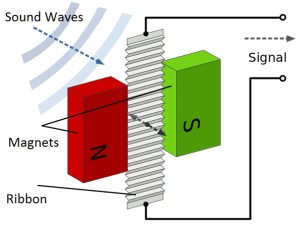 Unlike dynamic and condenser microphones, which capture sound by responding to sound pressure level (SPL), ribbon mics work by reacting to the change in air velocity. In ribbon mics, a light metal ribbon is suspended between the poles of a magnet. When the ribbon vibrates, it creates a voltage that corresponds to the changes in the air velocity of the sound source, unlike other mics where the voltage is proportional to the displacement of the diaphragm. In older models, a step-up transformer was required in order to increase the comparatively low output to usable levels. Today, that is no longer a problem as modern ribbon mics are equipped with better magnets and more efficient transformers that give them output levels that match or even exceed a typical dynamic microphone.
Unlike dynamic and condenser microphones, which capture sound by responding to sound pressure level (SPL), ribbon mics work by reacting to the change in air velocity. In ribbon mics, a light metal ribbon is suspended between the poles of a magnet. When the ribbon vibrates, it creates a voltage that corresponds to the changes in the air velocity of the sound source, unlike other mics where the voltage is proportional to the displacement of the diaphragm. In older models, a step-up transformer was required in order to increase the comparatively low output to usable levels. Today, that is no longer a problem as modern ribbon mics are equipped with better magnets and more efficient transformers that give them output levels that match or even exceed a typical dynamic microphone.
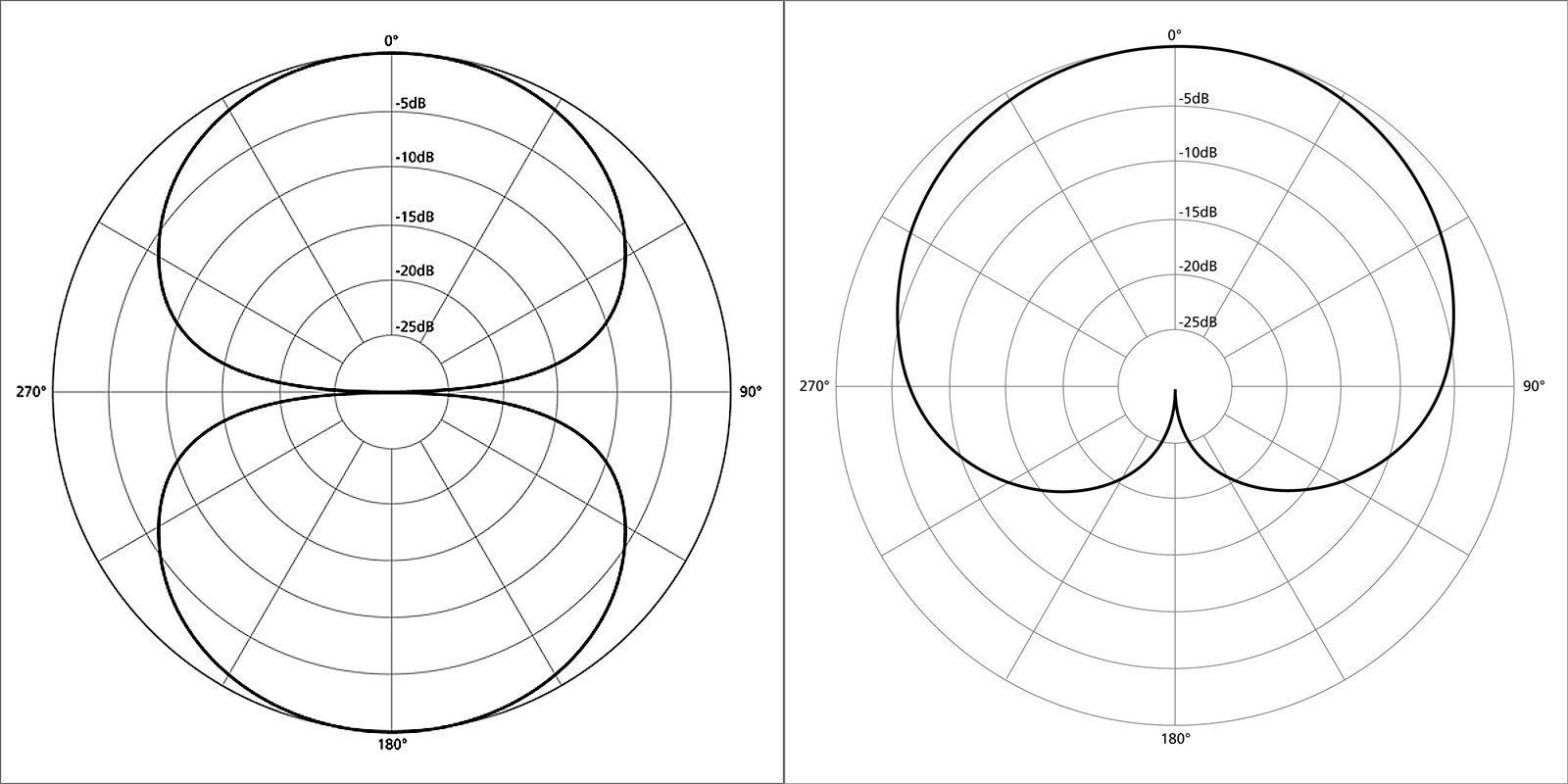 From Left: Bi-directional (Figure-8) polar pattern of a typical ribbon mic versus a cardioid polar pattern.[/caption]
From Left: Bi-directional (Figure-8) polar pattern of a typical ribbon mic versus a cardioid polar pattern.[/caption]
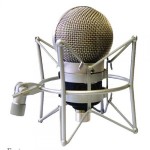 CAD Trion 7000 Dual-Element Ribbon Microphone w/ Shockmount & Aluminum Case @ $199.00. Thick and rich, the dual ribbon "rounds out" guitar stacks, brass, and woodwinds. A narrow strip of ultra-thin aluminum suspended in a magnetic field oscillates symbiotically with your sound source. Electrical current is the result. We use two ribbons for added sensitivity. Experience classic ribbon vocal sound. Elastic shock mount and metal travel case are included.
CAD Trion 7000 Dual-Element Ribbon Microphone w/ Shockmount & Aluminum Case @ $199.00. Thick and rich, the dual ribbon "rounds out" guitar stacks, brass, and woodwinds. A narrow strip of ultra-thin aluminum suspended in a magnetic field oscillates symbiotically with your sound source. Electrical current is the result. We use two ribbons for added sensitivity. Experience classic ribbon vocal sound. Elastic shock mount and metal travel case are included.
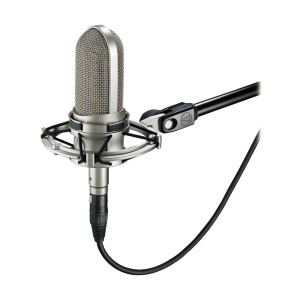 AUDIO TECHNICA AT4080 Bidirectional Active Ribbon Microphone @ $999.00. The groundbreaking Audio-Technica AT4080 Microphone achieves coveted ribbon microphone sound while solving the fragility and low output problems that have historically plagued these kind of mics. Delivering the warm, smooth sound of a classic ribbon microphone, the handcrafted bidirectional AT4080 offers a robust build for long-lasting, reliable performance, as well as higher output for maximum compatibility with microphone preamplifiers.
AUDIO TECHNICA AT4080 Bidirectional Active Ribbon Microphone @ $999.00. The groundbreaking Audio-Technica AT4080 Microphone achieves coveted ribbon microphone sound while solving the fragility and low output problems that have historically plagued these kind of mics. Delivering the warm, smooth sound of a classic ribbon microphone, the handcrafted bidirectional AT4080 offers a robust build for long-lasting, reliable performance, as well as higher output for maximum compatibility with microphone preamplifiers.
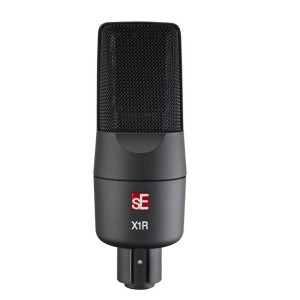 If you have any questions regarding the purchase of microphone or any other piece of gear we carry, don't hesitate to chat with one of our friendly PAL pros by using the live chat feature below or by calling us toll-free at 1 877-671-2200! You can check out our selection of ribbon mics by using the link below.
If you have any questions regarding the purchase of microphone or any other piece of gear we carry, don't hesitate to chat with one of our friendly PAL pros by using the live chat feature below or by calling us toll-free at 1 877-671-2200! You can check out our selection of ribbon mics by using the link below.
How Ribbon Mics Work
 Unlike dynamic and condenser microphones, which capture sound by responding to sound pressure level (SPL), ribbon mics work by reacting to the change in air velocity. In ribbon mics, a light metal ribbon is suspended between the poles of a magnet. When the ribbon vibrates, it creates a voltage that corresponds to the changes in the air velocity of the sound source, unlike other mics where the voltage is proportional to the displacement of the diaphragm. In older models, a step-up transformer was required in order to increase the comparatively low output to usable levels. Today, that is no longer a problem as modern ribbon mics are equipped with better magnets and more efficient transformers that give them output levels that match or even exceed a typical dynamic microphone.
Unlike dynamic and condenser microphones, which capture sound by responding to sound pressure level (SPL), ribbon mics work by reacting to the change in air velocity. In ribbon mics, a light metal ribbon is suspended between the poles of a magnet. When the ribbon vibrates, it creates a voltage that corresponds to the changes in the air velocity of the sound source, unlike other mics where the voltage is proportional to the displacement of the diaphragm. In older models, a step-up transformer was required in order to increase the comparatively low output to usable levels. Today, that is no longer a problem as modern ribbon mics are equipped with better magnets and more efficient transformers that give them output levels that match or even exceed a typical dynamic microphone.
The Polar Pattern
One of the more interesting aspects of the ribbon mic that sets it apart from others is its bi-directional polar pattern (also known as a figure-8), meaning that it captures sound on both of the front and back equally while rejecting anything from the sides. Take a look at the image below to compare it with the cardioid polar pattern of a typical dynamic mic. Some of today's ribbon mics can also be configured to have cardioid, hyper-cardioid, omnidirectional, and other various polar patterns aside from the figure-8. [caption id="attachment_6451" align="aligncenter" width="623"] From Left: Bi-directional (Figure-8) polar pattern of a typical ribbon mic versus a cardioid polar pattern.[/caption]
From Left: Bi-directional (Figure-8) polar pattern of a typical ribbon mic versus a cardioid polar pattern.[/caption]
The Benefits Of Ribbon Mics
The biggest benefit of using ribbon mic is simple - capturing highly dynamic, high fidelity sound. For recordings that require accurate details, incredibly clear highs and accurate lows, few can match a good ribbon microphone. While very detailed, some feel that they do tend to add a slightly dark presence to the overall recording. The bi-directional polar pattern also makes them great at capturing recordings that have a vibrant, natural feel and a great sense of spatial sound. When mixed versatile miking techniques and the right setup, ribbon mics are highly flexible recording tools. While these type of mics have been used in studios for years, modern models have also found their way to the stage, commonly used in sound reinforcement for acoustic guitars, violins, horns and many other acoustic instruments. With acoustic guitars, in particular, many feel that they work much, much better than an onboard pickup when it comes to accurate sound amplification. CAD Trion 7000 Dual-Element Ribbon Microphone w/ Shockmount & Aluminum Case @ $199.00. Thick and rich, the dual ribbon "rounds out" guitar stacks, brass, and woodwinds. A narrow strip of ultra-thin aluminum suspended in a magnetic field oscillates symbiotically with your sound source. Electrical current is the result. We use two ribbons for added sensitivity. Experience classic ribbon vocal sound. Elastic shock mount and metal travel case are included.
CAD Trion 7000 Dual-Element Ribbon Microphone w/ Shockmount & Aluminum Case @ $199.00. Thick and rich, the dual ribbon "rounds out" guitar stacks, brass, and woodwinds. A narrow strip of ultra-thin aluminum suspended in a magnetic field oscillates symbiotically with your sound source. Electrical current is the result. We use two ribbons for added sensitivity. Experience classic ribbon vocal sound. Elastic shock mount and metal travel case are included.
 AUDIO TECHNICA AT4080 Bidirectional Active Ribbon Microphone @ $999.00. The groundbreaking Audio-Technica AT4080 Microphone achieves coveted ribbon microphone sound while solving the fragility and low output problems that have historically plagued these kind of mics. Delivering the warm, smooth sound of a classic ribbon microphone, the handcrafted bidirectional AT4080 offers a robust build for long-lasting, reliable performance, as well as higher output for maximum compatibility with microphone preamplifiers.
AUDIO TECHNICA AT4080 Bidirectional Active Ribbon Microphone @ $999.00. The groundbreaking Audio-Technica AT4080 Microphone achieves coveted ribbon microphone sound while solving the fragility and low output problems that have historically plagued these kind of mics. Delivering the warm, smooth sound of a classic ribbon microphone, the handcrafted bidirectional AT4080 offers a robust build for long-lasting, reliable performance, as well as higher output for maximum compatibility with microphone preamplifiers.
One More Thing...
While they might not be as common as dynamic stage microphones or condensers, the benefits of a ribbon microphone make it a versatile and powerful tool that no recording musician should be without. And while expensive models will generally give you better results, economy priced ribbon mics are honestly not that bad and can still yield good results with the right setup. If you don't own one of these mics, you owe it to yourself and your music to take advantage of what they have to offer. Check out the video below for more info: If you have any questions regarding the purchase of microphone or any other piece of gear we carry, don't hesitate to chat with one of our friendly PAL pros by using the live chat feature below or by calling us toll-free at 1 877-671-2200! You can check out our selection of ribbon mics by using the link below.
If you have any questions regarding the purchase of microphone or any other piece of gear we carry, don't hesitate to chat with one of our friendly PAL pros by using the live chat feature below or by calling us toll-free at 1 877-671-2200! You can check out our selection of ribbon mics by using the link below.

